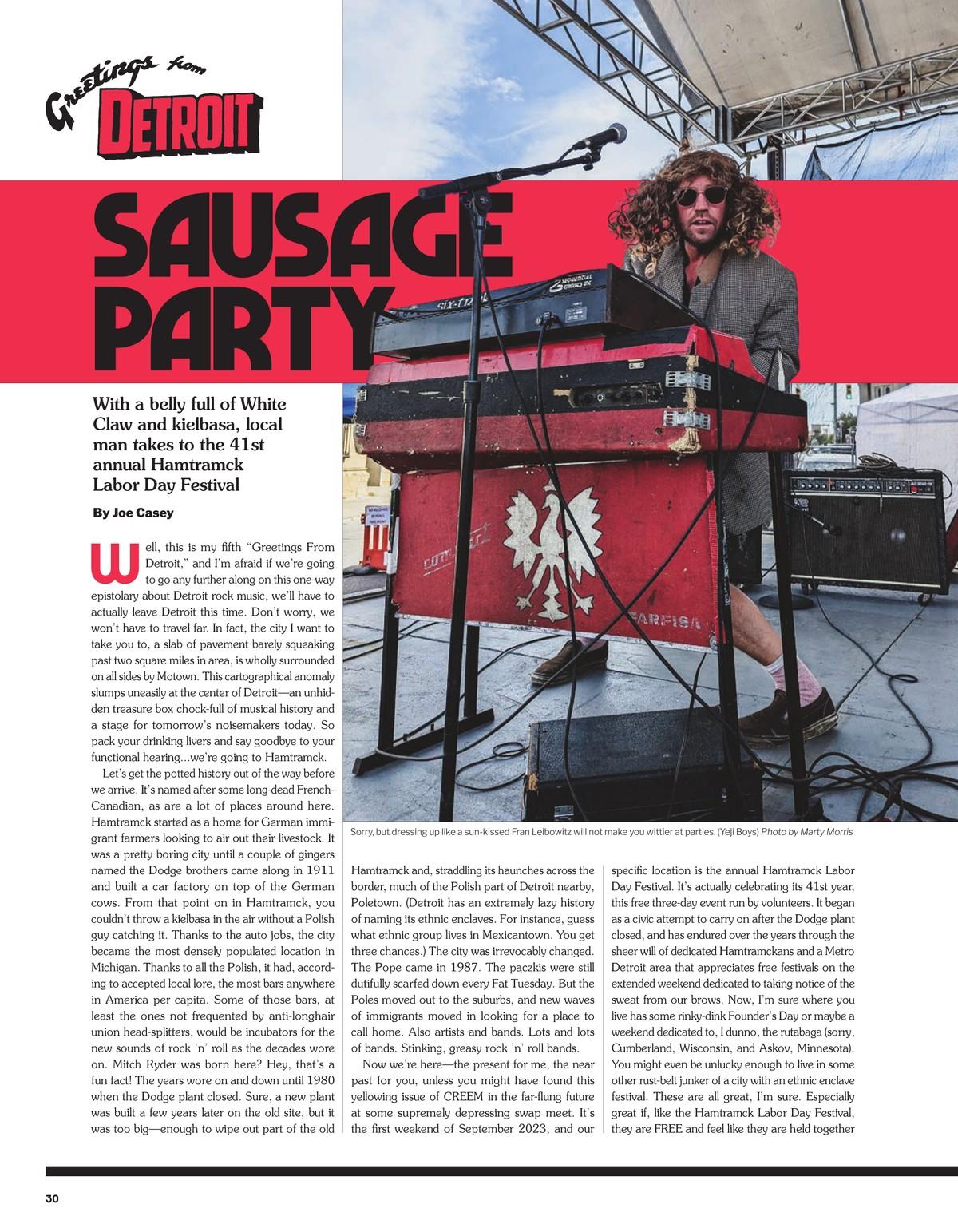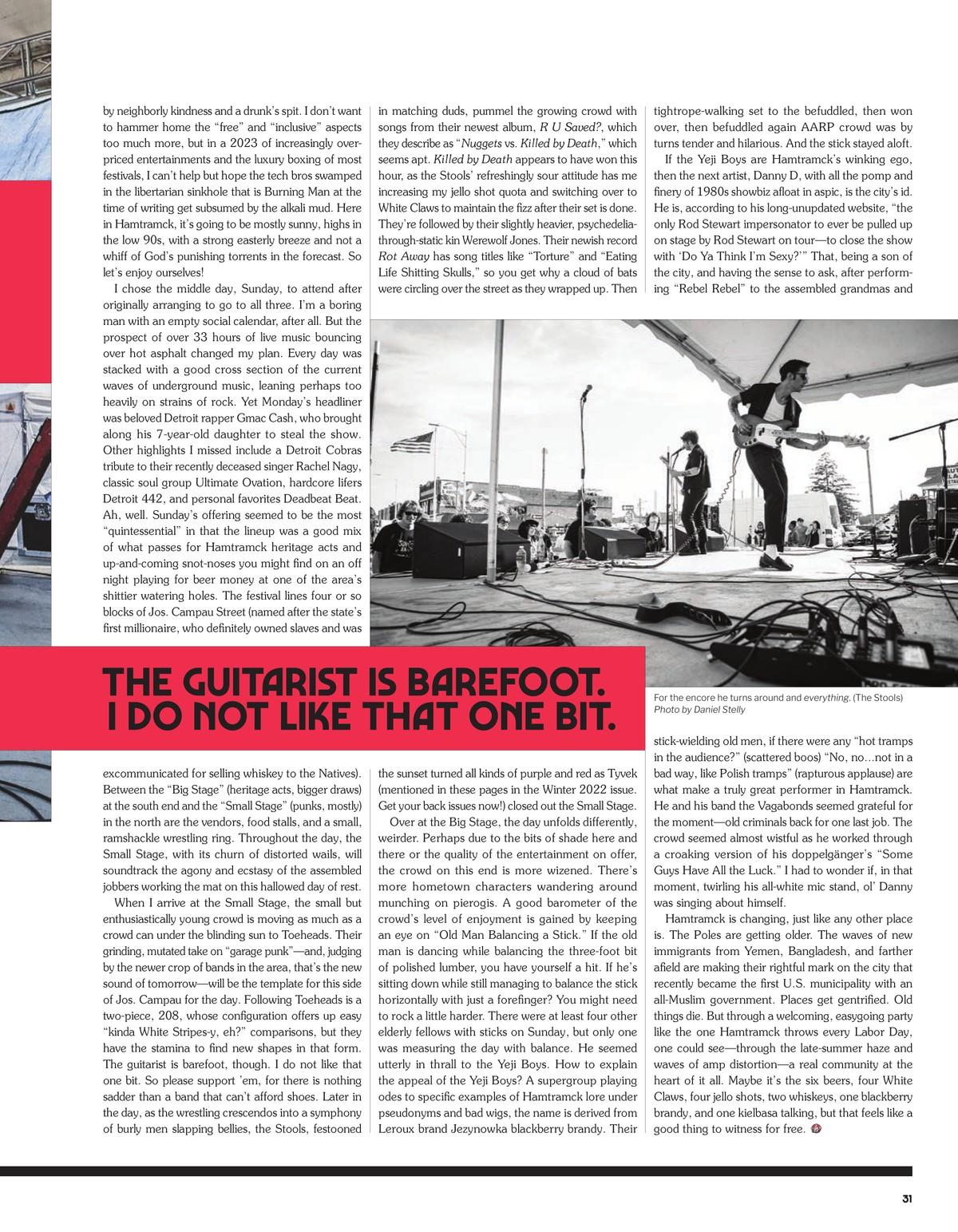Greetings from Detroit
SAUSAGE PARTY
With a belly full of White Claw and kielbasa, local man takes to the 41st annual Hamtramck Labor Day Festival.


Well, this is my fifth “Greetings From Detroit,” and I’m afraid if we’re going to go any further along on this one-way epistolary about Detroit rock music, we’ll have to actually leave Detroit this time. Don’t worry, we won’t have to travel far. In fact, the city I want to take you to, a slab of pavement barely squeaking past two square miles in area, is wholly surrounded on all sides by Motown. This cartographical anomaly slumps uneasily at the center of Detroit—an unhidden treasure box chock-full of musical history and a stage for tomorrow’s noisemakers today. So pack your drinking livers and say goodbye to your functional hearing...we’re going to Hamtramck.

